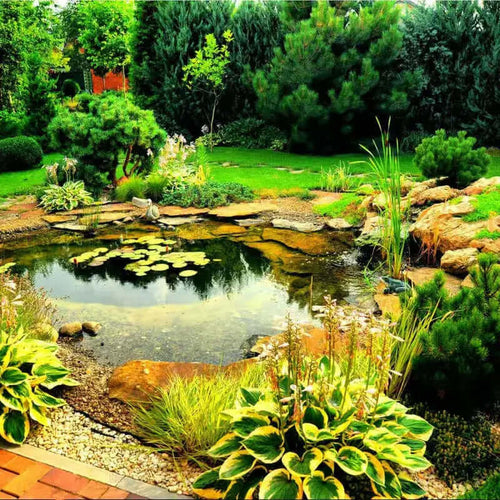Growing Coontail Plants in your Pond
Coontail (Ceratophyllum demersum) is an intriguing aquatic plant with a distinctive place in marine ecosystems. With its unique appearance, ecological significance, and practical applications, coontail offers a rich subject of study for nature enthusiasts, ecologists, and aquarists alike.
Characteristics and Appearance
Coontail, also known as hornwort, is a submerged aquatic plant that thrives in freshwater habitats. Its name originates from its striking resemblance to the tail of a raccoon. The plant features dark green, feathery leaves that branch out along the stem, creating a distinctive appearance that sets it apart from other aquatic plants. The leaves are typically arranged in whorls, creating a visually appealing pattern extending along the stem. Coontail lacks true roots but anchors itself in the sediment through rhizoids, tiny hair-like structures that provide stability.
Habitat and Distribution
Coontail is a widespread aquatic species found in various freshwater habitats, including ponds, lakes, slow-moving rivers, and marshes.
It's known for its adaptability and can thrive in still and flowing water environments. This plant is native to North America and found in Europe and Asia. Its ability to flourish in various water conditions and adapt to changing environments contributes to its ecological success.
Ecological Significance
Coontail is vital in aquatic ecosystems, contributing to their balance and overall health. Some of its ecological functions include:
Habitat and Shelter: Coontail provides habitat and cover for aquatic organisms such as small fish, insects, and invertebrates. The dense growth of the coontail can create sheltered areas that offer protection from predators and changing water conditions.
Oxygen Production: Through photosynthesis, coontail produces oxygen, contributing to the oxygenation of aquatic environments. This is crucial for marine organisms' survival and maintaining healthy water quality.
Water Filtration: Coontail's growth can help filter the water by absorbing excess nutrients, leading to water pollution and harmful algal blooms.
Algae Control: The shade provided by the coontail's dense growth can reduce sunlight penetration, helping to control the growth of algae that thrive in well-lit environments.
Practical Applications
Coontail has practical applications beyond its ecological role:
Aquascaping: Coontail is a popular choice for aquascaping in aquariums and water gardens. Its unique appearance adds aesthetic value to underwater landscapes, and its growth can help create a natural and balanced aquatic environment.
Water Filtration: Due to its water-filtering properties, coontail is sometimes used in constructed wetlands or natural water treatment systems by removing excess nutrients.
Research and Education: Coontail is studied by ecologists and biologists to understand better aquatic ecosystems, invasive species management, and the impact of nutrient pollution on water bodies.
Cautions and Considerations
While coontail has ecological benefits, there are considerations to keep in mind:
Growth Patterns: Coontail can multiply under optimal conditions, potentially leading to dense mats of vegetation that may interfere with recreation, navigation, and other water activities.
Aquarium Maintenance: In aquariums, coontail growth may require occasional pruning to prevent overgrowth and ensure a balanced aquatic environment.
Conclusion
Coontail plants are unique in aquatic ecosystems, offering ecological benefits and practical applications. Their distinctive appearance, adaptability, and roles in oxygenation, filtration, and habitat creation contribute to their significance in freshwater environments. Whether as an element of natural beauty in water gardens, a subject of scientific study, or a tool for water filtration, coontail plants continue to captivate our curiosity and demonstrate the intricate interplay between aquatic plants and their environments. As we appreciate the diverse roles of coontail in our ecosystems, we gain a deeper understanding of the delicate balance that sustains our watery landscapes.



















































